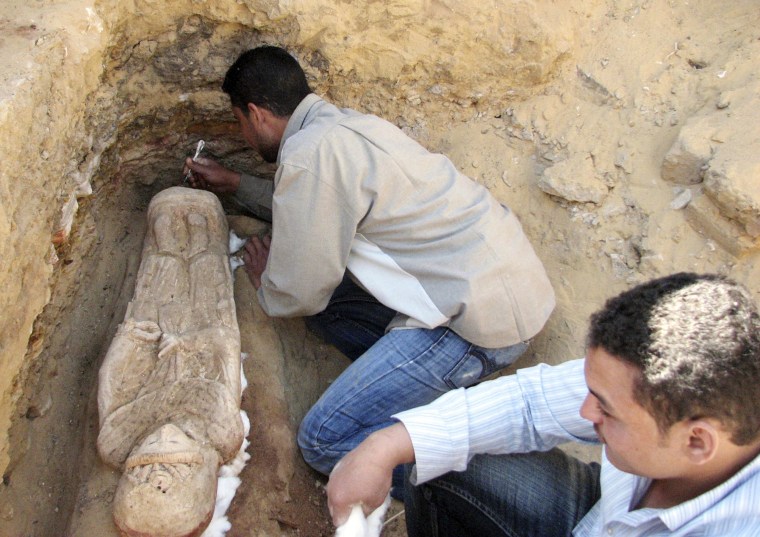A bejeweled mummy dressed in Roman robes has emerged from the sands of Egypt's Bahariya Oasis, the Supreme Council of Antiquities said Monday.
Entombed in a decorated gypsum sarcophagus, the 38-inch tall mummy belonged to a woman or girl who died in the Greco-Roman period about 2,300 years ago.
Unearthed in a rock-hewn tomb at a modern construction site near the town of Bawiti, in Bahariya Oasis, some 185 miles southwest of Cairo, the mummy points to the existence of a large Greco-Roman necropolis nearby, Mahmoud Affifi, director of Cairo and Giza antiquities, said in a statement.
Indeed, Egyptian archaeologists uncovered 14 Graeco-Roman tombs at the site dating to the third century B.C.
They also found four anthropoid masks made of plaster, a collection of coins, clay and glass vessels of different shapes and sizes, and a sheet of gold depicting Imsety, Duamutef, Hapi and Qebehsenuef -- the four sons of the ancient Egyptian sky god Horus.
According to Affifi, the tombs have a unique interior design. They consist of a long stairway leading to a corridor which ends in a hall. Each corner of the hall contains mastabas (rectangular structures found above many Egyptian tombs) that were used in burning the deceased.
Set in a depression covering over 1,250 square miles in Egypt's Western Desert near the city of Bawiti, the Bahariya Oasis consists of colonies of palm trees and hot springs, with black hills in the background. There is no trace of pyramids -- tombs par excellence -- or of mausoleums.
Yet it is here that in 1996 Dr. Zahi Hawass discovered 17 tombs with 254 golden masked mummies.
Called the Valley of the Golden Mummies, the site has turned out to be the biggest ancient Egyptian cemetery ever uncovered — holding perhaps as many as 10,000 mummies buried more than 2,000 years ago.
